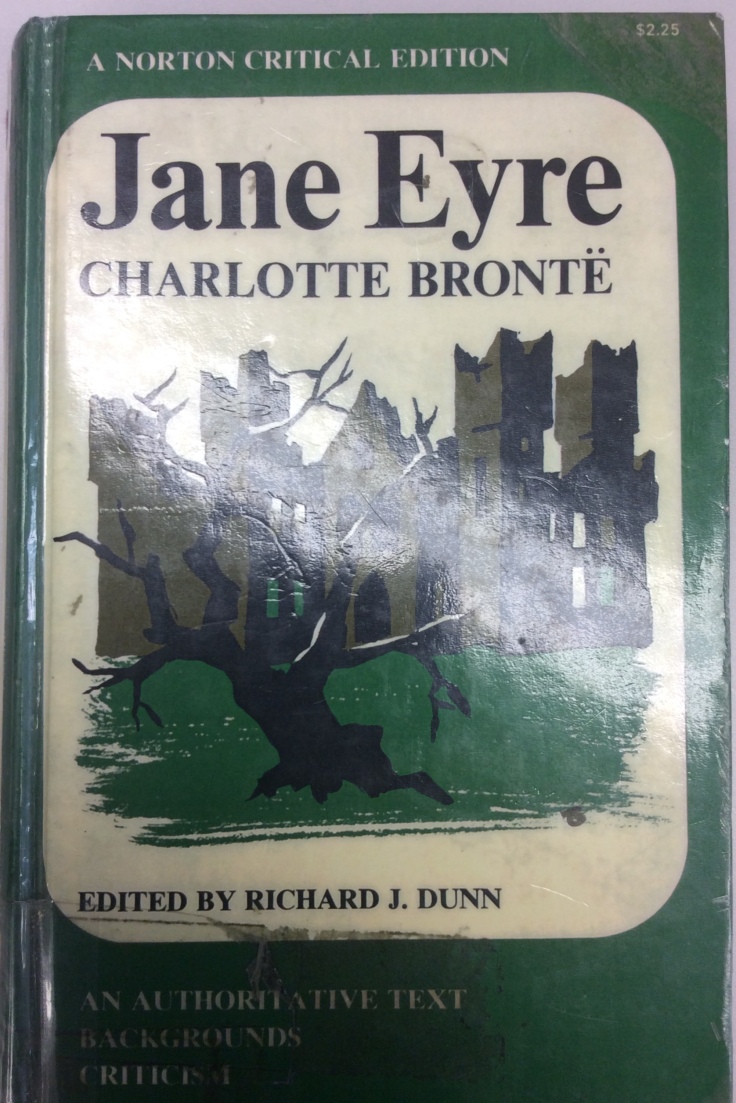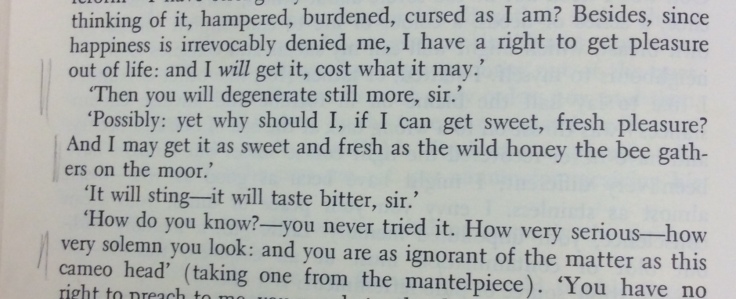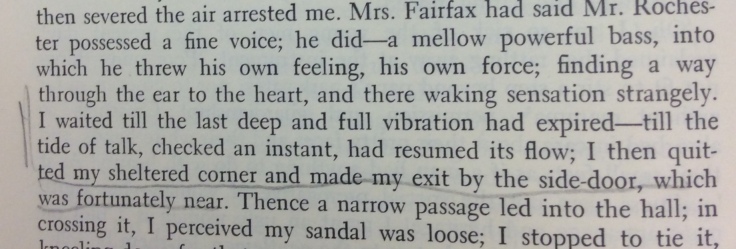In this hardback Norton edition of Jane Eyre, found in the Birkbeck Library, the annotator has indicated to the reader the classic motif of entrapment, yet he/she has highlighted what differentiates Jane from other characters: her heroism.
Firstly, on page 120, double lines indicate aspects of Jane’s character in interviewing Rochester: ‘Besides, since happiness is irrevocably denied me, I have a right to get pleasure out of life: and I will get it, cost what it may.’ Then Rochester goes on to say: ‘And I may get it as sweet and fresh as the wild honey the bee gathers on the moor.’ This precise image occurs later in the text, when Jane is on her journey to Whitecross: ‘Long after the little birds had left their nests; long after bees had come in the sweet prime of day to gather the heath honey before the dew was dried — when the long morning shadows were curtailed, and the sun filled earth and sky.’ (Vol.III, ch.II) 
It was as if Rochester is presented as forewarning Jane of her inevitable spiritual journey and knew the ‘spiritual food’ she would need to sustain her on her journey back to him. Unless this indication had been done and I had seen it, I would never have made that connection. Furthermore, Rochester’s observation of Jane indicates: ‘—how very solemn you look: and you are as ignorant of the matter as this cameo head’. Rochester sees Jane contemplating a future that he had already prophesied. By the material specificity of the ‘cameo’ head, the reader understands something of an ironic distance, as we know her to be the reverse of this substance: Jane is a deeply introspective and contemplative character; it is more that Rochester does not yet fully know her true spiritual worth.
Another underlining of note from page 149 was one which drew attention to Jane’s physical separation when she ‘retired to a window-seat’. The verb ‘retired’ suggests a giving up of daily life and activity and accepting compliance. This of course connects directly back to chapter 1 and the window seat at Gateshead Hall: ‘She is in the window-seat, to be sure, Jack.’ (Vol.I, ch.I) This is a direct representation of the ideology of ‘separate spheres’ —what complicates Jane Eyre is that she is perpetually in a different class or role/place, dependent on the various settings in the text: familial inferior, socially undesirable, social inferior, economic inferior and so on. In this scene of the novel, Jane shows the reader how Adèle is additionally being brought into this space: inferiority and domestic interiority is contiguous from generation to generation.

A reversal of this condition is again noted in another annotation section from page 158 where Jane is seen to be departing from an area of entrapment and moving towards a symbolic ‘door’. She seems to be almost inspired by the somatic effects of Rochester’s voice. This reader’s line represents the line of Jane’s exit and subsequently draws attention, for me at least, to a physical and literal breaking out of these entrapping spheres.
The reader on page 225, in this thread, felt inspired to inscribe the novel with their own observation: ‘Storm strikes fear to the heroine, but not to Jane during this time of her happiness.’ The annotator recognises that the pathetic fallacy is used to represent human emotions and the symbol of the horse-chestnut tree being spilt shows a tearing asunder of those passions: none of which affect Jane. Furthermore, on page 255, there is a final annotation: ‘…other heroines would have collapsed.’ Indeed, they would have done; this is the famous wedding-scene of the novel where Rochester the bigamist is uncovered. The aphorism works well.

Leave a comment